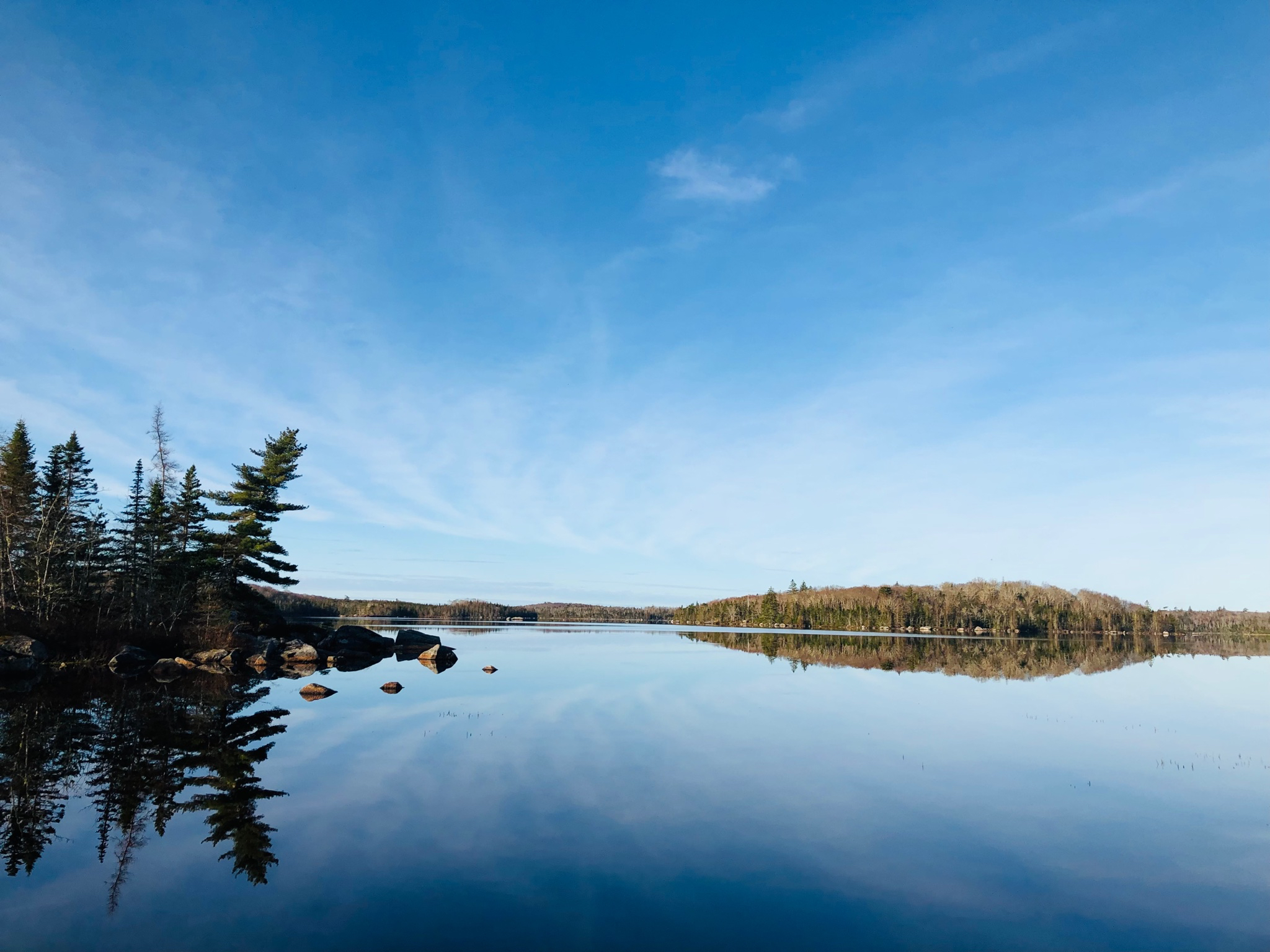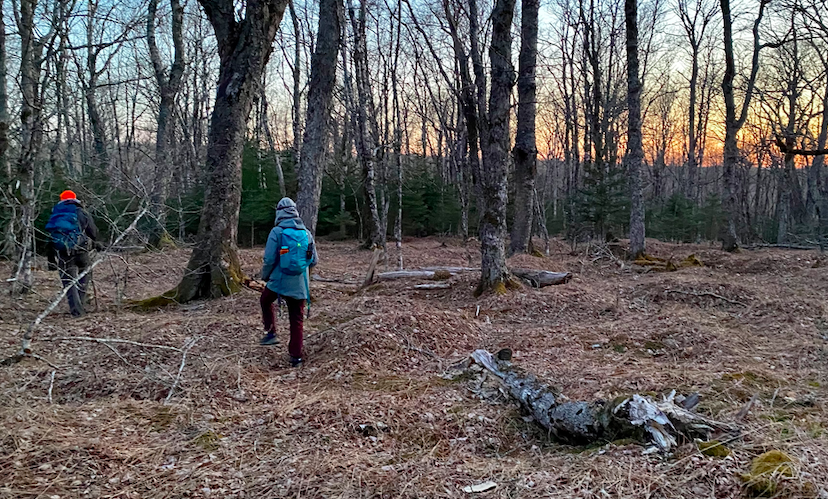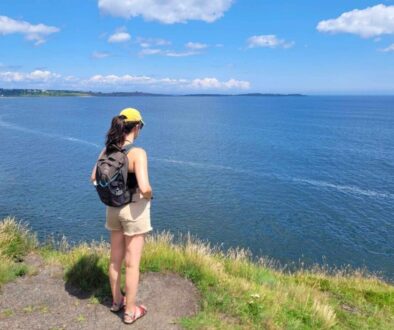Spring Surveys at Archibald Lake

In early May, I embarked on a 5-day survey expedition to Archibald Lake with the CPAWS Nova Scotia team. Our goal was to identify rare species throughout this area, including plants, birds, and lichens, and help boost the campaign to secure legal protection for these important lands and waters.
Archibald Lake is a pending wilderness area located near Sherbrooke in Guysborough County. This area contains old forest, drumlins, and riparian ecosystems. It’s also a part of the St. Mary’s River watershed which supports species-at-risk habitat for Atlantic salmon and wood turtles. The Nova Scotia government announced its intention to protect Archibald Lake back in 2020 and completed a final public consultation, but there has been no movement to designate the wilderness area since. That’s a problem and it’s why we focused our surveys in this area.
I had never participated in species-at-risk surveys before this expedition, so I was excited to gain some experience identifying plants and animals in their natural habitat. I spent much of the week prior familiarizing myself with bird calls and committing images of plants and lichens to memory. Once in the field, however, I quickly realized it takes more than a little at-home studying to do this specialized work and I was glad to learn directly from a birding expert who joined us on the expedition.

Our surveys at Archibald Lake mostly took place in the evenings or early mornings. During bird surveys, we woke up at 3 or 4 am, bundled up in extra layers to combat the cold, and hiked out of camp with our headlamps on. As the sun rose, we slowed our walking pace and stepped lightly, allowing our birding expert to catch any whispers of bird song in the air. While I struggled to identify birds by ear, I found their cheerful calls to be energizing on those chilly mornings.
One of my favourite aspects of the expedition was the night surveys. Our team would sit in stillness on the old forest floor between Rocky and Archibald Lake, just watching and listening. While the forest initially seemed quiet, we would not have to wait long for the haunting call of a loon or a chorus of coyotes to puncture the silence around us. It was magical to witness the wildlife of Archibald Lake waking up.

In between our surveys, most of our time was spent at camp. We pitched our three colourful tents on a small sandy beach at Archibald Lake and spent our free hours paddling around the lake, cooking meals, and talking about the work ahead. We also endured some crazy temperature swings at our campsite. On our first night, it dropped to -6 degrees, but by our last day, we were hiking out in temperatures of +30 degrees!!
Despite the unpredictable weather, our surveys were successful in identifying a long list of significant species at Archibald Lake, including a long-eared owl and a plant called spring beauty. This is an area of tremendous biodiversity, but it remains vulnerable to disturbance so long as the government stalls on legal protection. CPAWS Nova Scotia will continue to explore the many conservation values of Archibald Lake and advocate for its designation as a protected wilderness area.
Stay tuned for more updates on Archibald Lake!
Caitlin

